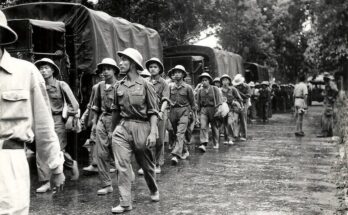
A Journey to Freedom
The Underground Railroad represents one of the most courageous and significant movements in American history, embodying the relentless struggle for freedom against the oppressive institution of slavery. Operating primarily in the decades leading up to the Civil War, this clandestine network of routes, safe houses, and individuals aided thousands of enslaved African Americans in their quest for liberty. While it was neither a railroad nor underground, the metaphorical name evokes a sense of urgency and secrecy that characterized the perilous journeys undertaken by those seeking freedom. This write-up explores the origins, operations, key figures, and lasting impact of the Underground Railroad, shedding light on a pivotal chapter in the fight against slavery.
Read The Signing of the Magna Carta (1215)
Historical Context
The roots of the Underground Railroad can be traced back to the late 18th century when the abolitionist movement began to gain momentum in the United States. The first enslaved Africans arrived in Virginia in 1619, and by the 1800s, the practice of slavery was deeply entrenched in the Southern states. The moral and ethical dilemmas posed by slavery led to increasing resistance from both free and enslaved African Americans, as well as sympathetic white abolitionists.

The term “Underground Railroad” began to gain traction around the 1830s, drawing parallels to the emerging steam railroads of the time. It was a metaphorical description of the secretive nature of the network that facilitated the escape of enslaved individuals. The network included various routes leading to the Northern states and Canada, where slavery was illegal, and it operated against the backdrop of harsh laws such as the Fugitive Slave Acts, which mandated the return of escaped slaves to their owners.

Structure and Operation
The Underground Railroad was characterized by its decentralized and informal structure. It did not have a central organization or formal leadership; instead, it consisted of numerous local networks operated by individuals and groups committed to the cause of abolition. Participants included free blacks, former slaves, white abolitionists, and religious groups, particularly Quakers, who provided shelter, food, and support.
Key Roles in the Underground Railroad
- Conductors: These were individuals who guided fugitive slaves along the routes. They often traveled at night to avoid detection, leading runaways from one safe house to another.
- Station Masters: These were people who provided shelter to the fugitives in their homes, churches, or barns. They were crucial in maintaining the secrecy and safety of the operation.
- Passengers: This term referred to the enslaved individuals who sought freedom. They often faced immense risks, including the threat of capture and severe punishment.
- Vigilance Committees: In Northern cities, these groups raised funds and resources to support the Underground Railroad, helping to provide food, lodging, and transportation for fugitives.
Read The Rosetta Stone: Unlocking Ancient Egypt
The Journey to Freedom
The journey on the Underground Railroad was fraught with danger. Enslaved individuals often had to travel long distances, sometimes covering 10 to 20 miles each night to reach the next station. The routes were often perilous, with the constant threat of slave catchers and bounty hunters. To evade capture, conductors used various strategies, including disguising the fugitives, traveling through remote areas, and utilizing natural landmarks for navigation.
The journey was not just a physical one; it was also an emotional and psychological battle. Many fugitives left behind family members and familiar surroundings, facing the unknown in their pursuit of freedom. The network relied on a system of signals and codes to communicate, ensuring that participants could coordinate their efforts without attracting attention.

Notable Figures
Several key figures emerged from the Underground Railroad, becoming symbols of courage and determination in the fight against slavery:
- Harriet Tubman: Perhaps the most famous conductor, Tubman escaped slavery in 1849 and returned to the South multiple times to rescue family members and others. She is credited with leading over 300 enslaved people to freedom and became known as “Moses” for her role in guiding others to liberation.

- William Still: A free black abolitionist, Still played a significant role in the Underground Railroad by documenting the stories of fugitives who passed through his station in Philadelphia. His book, The Underground Railroad, published in 1872, remains a crucial historical record.

- Levi Coffin: A Quaker abolitionist, Coffin and his wife Catherine operated a station in Indiana that sheltered thousands of fugitives. He is often referred to as the “President of the Underground Railroad” for his extensive contributions.

Impact on Society
The Underground Railroad had profound implications for American society. It not only provided a lifeline for those seeking freedom but also heightened tensions between the North and South. The existence of the Underground Railroad fueled Southern fears of a growing abolitionist movement and contributed to the eventual outbreak of the Civil War.
The network also challenged the notion that African Americans were incapable of organizing for their own liberation. It showcased the agency and resilience of enslaved individuals and their allies, who risked their lives to confront the brutal realities of slavery. The stories of bravery and sacrifice associated with the Underground Railroad continue to inspire movements for justice and equality today.
Read Eruption of Mount Vesuvius: Annihilation of Pompeii
Conclusion
The Underground Railroad remains a powerful symbol of the struggle for freedom and human rights. It represents the collective efforts of individuals from diverse backgrounds who came together to challenge the institution of slavery. Through their bravery and determination, they not only changed the lives of countless individuals but also laid the groundwork for future generations to continue the fight for justice. As we reflect on this chapter of history, it is essential to honor the legacy of those who dared to defy oppression and seek a better future.
FAQs
1. What was the Underground Railroad?
The Underground Railroad was a network of secret routes and safe houses that helped enslaved African Americans escape to freedom in the Northern states and Canada before the Civil War.
2. Who were the key figures involved in the Underground Railroad?
Notable figures included Harriet Tubman, William Still, and Levi Coffin, among many others who played crucial roles in aiding fugitives.
3. How did the Underground Railroad operate?
The Underground Railroad operated through a decentralized network of individuals and groups who provided shelter, food, and guidance to fugitives, often using coded language and signals to maintain secrecy.
4. What risks did participants face?
Participants faced severe risks, including the threat of capture and punishment. Assisting fugitives was considered a crime, punishable by fines or imprisonment under the Fugitive Slave Acts.
5. What impact did the Underground Railroad have on American society?
The Underground Railroad heightened tensions between the North and South, challenged perceptions of African Americans, and contributed to the abolitionist movement, ultimately leading to the Civil War.
Related Website Links
- National Geographic – The Underground Railroad
- PBS – The Underground Railroad
- Britannica – Underground Railroad
- National Park Service – Historic Context for the Underground Railroad
This comprehensive exploration of the Underground Railroad highlights its historical significance and the profound impact it had on the fight for freedom and justice in America.


